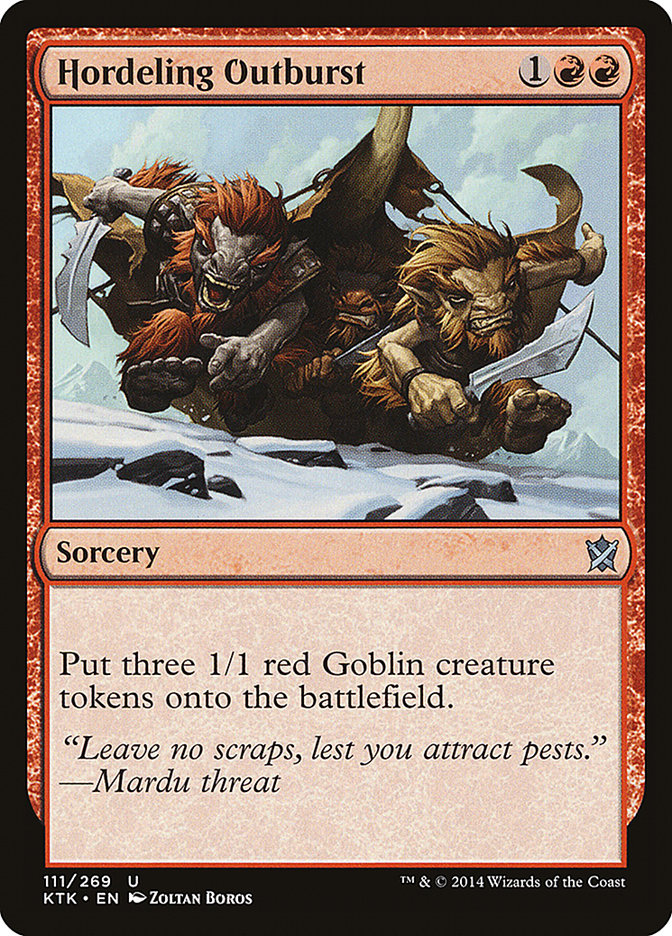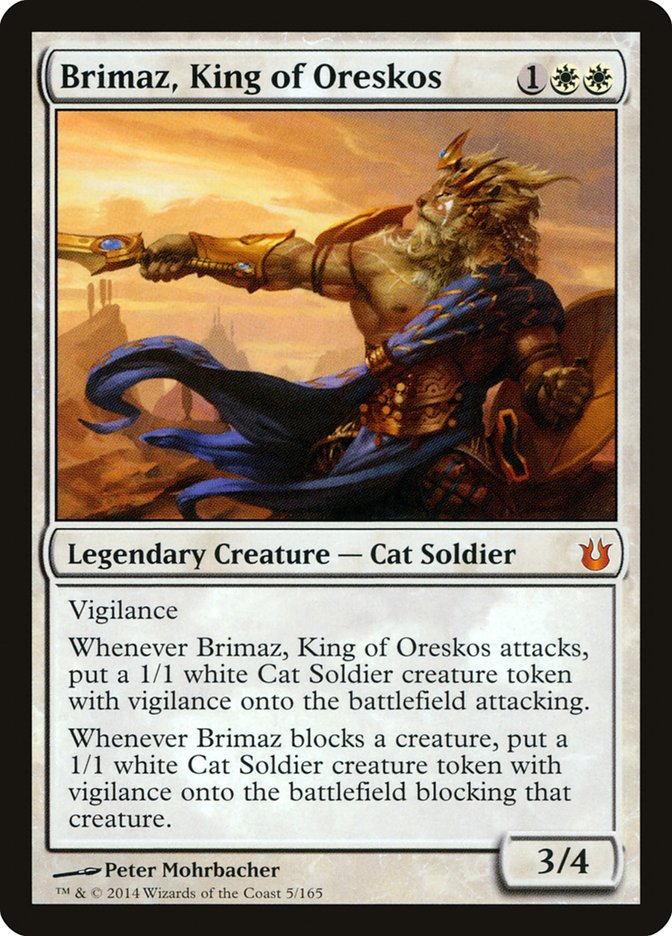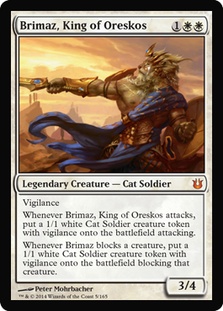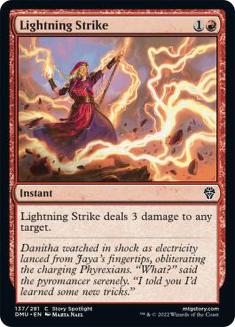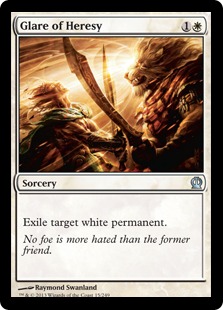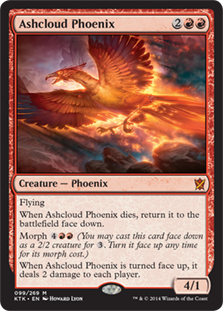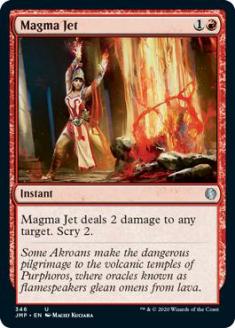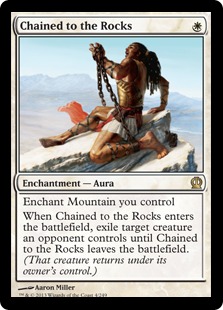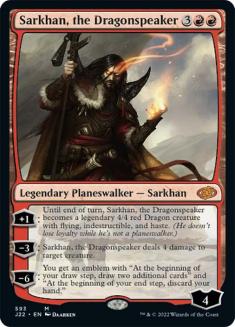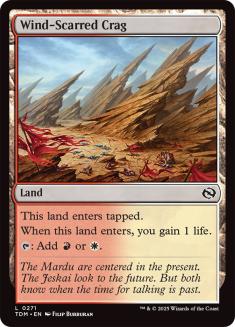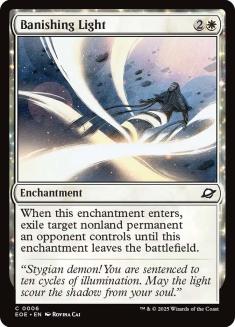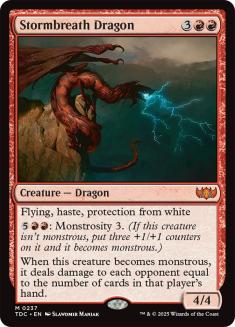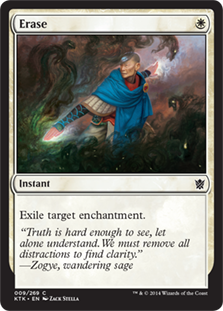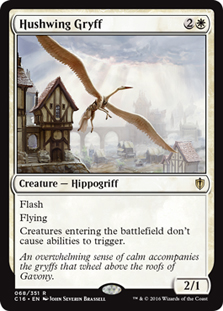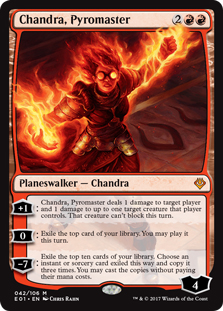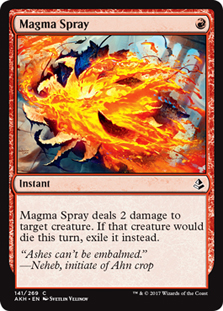Up until last week, I was pretty much done with Standard. I couldn’t win any match with any deck. I remember one day I stumbled into work with a long, sad
face. Some of my coworkers were like “Why the long face?” I slowly peeled off my horse mask and answered them as best as I could.
“Last night I battled extensively on Magic: the Gathering’s online client known simply as Magic Online. Originally it was developed by a third party called
Leaping Lizard in 2002…”
After about 10-15 minutes of extensive Magic Online history, only some of which was factual, I came to the real point of the matter.
“…so that’s how we ended up in Version 4. Anyway, long story short, last night I played for four hours on Magic Online and I didn’t win a single game of
Standard. And that’s why I have the long face!”
This exchange was based on a true story. The part that was true was how I actually played for four entire hours on Magic Online and I didn’t win a single
game. I’m not even talking about matches here. I didn’t even win a game.
The part that was false was everything else.
It was brutal. I was not checking myself. I was getting wrecked. And it sucked. It was demoralizing.
I tested out a wide variety of decks in Standard and I can tell you, they are not for me. Jeskai Ascendancy might be a really powerful card, but I am
something awful at playing those half combo, half tempo, half aggro decks. I think I’ll leave that stuff to someone else and focus on an area I’m a lot
better at. Hornet Nest might be a Standard playable card, but when I’m getting turn 4’d by Mono-Red through a Lightning Strike and a Mark “Hornet” Nestico,
maybe it’s time to hang up the boots.
I’ll be honest here, getting crushed at Standard was kind of frustrating me. I wanted to do well in the format, but I just didn’t know where to start. All
I knew is that Stormbreath Dragon was the best creature nobody was playing. Well, that, and I knew that I was tired of playing these random midrange grindy
decks.
I was pissed off and I wasn’t going to take it anymore. I just wanted to kill people. I just wanted my opponents to be dead. I didn’t want to durdle for 90
turns. I just wanted to kill them. Get them dead.
And thus, “R/W Wreck’ Em” was born. Because screw them, that’s why.
Creatures (15)
- 4 Stormbreath Dragon
- 2 Brimaz, King of Oreskos
- 4 Goblin Rabblemaster
- 1 Ashcloud Phoenix
- 4 Seeker of the Way
Planeswalkers (3)
Lands (24)
Spells (18)

Here are some bold claims:
Hordeling Outburst is the best card in Standard.
Chandra, Pyromaster is the best planeswalker in Standard.
Chained to the Rocks is the best removal spell in Standard.
Stormbreath Dragon is the best creature in Standard.
Blue Diamond’s Bold Habanero BBQ Almonds are the best nut you’ve ever had.
WRECK EM!
Sorry, just had to throw that in there. Got excited.
So, now for some explanations.
Hordeling Outburst just really does everything. When your opponent passes the turn with two or three mana up, and they are obviously representing a removal
spell like Lightning Strike or Hero’s Downfall, it sucks to cast something like a Goblin Rabblemaster and just have it die. It also just sucks to pass the
turn without doing anything, which is also playing into your opponent’s gameplan.
That’s where Hordeling Outburst comes in. Not only is it awesome against all kinds of spot removal spells, but it is also is a great enabler for Stoke the
Flames, which is not to be taken lightly. Any time you can double or triple spell in the same turn, you start to pull really far ahead of your opponent,
which in turn makes these huge tempo gains like Chained to the Rocks just hammer the game home.
If Hordeling Outburst is the best card in Standard, then Chandra is simply amazing, because it trumps Hordeling Outburst so well. In addition, it’s also a
huge threat against a lot of the midrange decks. Decks like Mardu aren’t playing Hero’s Downfall and as a result are notoriously weak to opposing
planeswalkers, especially one like Chandra that is going to ping away tokens to weaken Butcher of the Horde. Chandra also plays a pivotal role against a
deck like Abzan. Following up a pair of Seekers or a Rabblemaster with a Chandra to ping a Siege Rhino is just a super powerful play. Not only can they not
block, but Rhino is not big enough by itself to kill Chandra, meaning they have to either waste their turn on a Hero’s Downfall or Abzan Charm on their
Rhino, or you get to just do it all over again the next turn.
Chandra is also just a great source of card advantage in a lot of matchups. This deck has Chained to the Rocks, Lightning Strike, Stoke the Flames, and
Magma Jet along with Hordeling Outburst. It can play defense very well, which means Chandra usually does not die. An unanswered Chandra will start to pull
away with the game very quickly.
Lastly, people aren’t really playing much Hero’s Downfall anymore. The time for Chandra to shine is nigh.
Stormbreath Dragon is at an interesting place right now, because nobody is really playing the card despite it being actually absurd. Two of the most common
removal spells are Abzan Charm and Chained to the Rocks, both which do not deal with Stormbreath Dragon. It also can trump Wingmate Roc and play defense
against W/U Heroic and Siege Rhino alike. Some decks, like the new Abzan Aggro decks are nearly just straight kold to the card. They don’t have removal for
it and almost all of their creatures also can’t attack through it.
The Game Plan
Despite being a R/W deck filled with creatures and burn spells, typically a fairly one-dimensional strategy, this deck actually has a number of different
ways in that games play out.
The first is the “wreck” em strategy. That’s where you curve out with Seeker of the Way and Goblin Rabblemaster armed with a flurry of burn spells and
Chained to the Rocks to clear the way and your opponent just bites the dust really fast. Those are the easy games.
However, things aren’t always so rosy. Against a lot of decks you have to play the grind through removal spells game. Generally speaking, against these
kinds of decks, you want to maximize the amount of damage you deal at every point, but you want to also not ever open yourself up to blowouts.
For example, if you’re playing against U/W Control and you think they have an End Hostilities in their hand and your board is a Seeker of the Way and you
have a Rabblemaster in hand. I would probably not just play the Rabblemaster into the board and let them get value from their sweeper. However, I would do
something like cast a Lightning Strike aimed at their head when I attack with Seeker to push through an extra damage from prowess. There, I am maximizing
my damage, but also not overextending.
Keep in mind that Sphinx’s Revelation doesn’t exist anymore. These decks now rely on cards like Radiant Fountain to preserve their life total, which means
that you can actually beat control decks by just getting them low enough on life and eventually drawing enough burn spells, even in games that go quite
long.
Another blowout you want to avoid is something like Bile Blight or Drown in Sorrow. Generally speaking, these cards are more likely in post-board games,
and I probably wouldn’t play too much around them in game 1. With that being said, I would definitely be wary of them in a post board game and try not to
let your opponent get too much value out of them. This is definitely easier said than done, however, as a lot of the creatures do die to Drown in Sorrow.
The final game plan the deck can execute is to play defense. This deck is surprisingly effective at holding down the fort. With Seeker of the Way’s
lifelink and a lot of cheap removal like Chained to the Rocks and the burn spells along with the power of Hordeling Outburst, it is easy to avoid falling
too far behind early in the game. Stormbreath Dragon is actually great on defense because so many creatures in the format, such as Rhino, Butcher,
Fleecemane Lion, Wingmate Roc and everything in W/U Heroic are white creatures.
The defensive gameplan usually involves waiting to stabilize the board and then using Chandra to generate enough card advantage to either slowly kill them
without losing control or set up a scenario where you just finish the game in one or two quick chunks to end it before they can come back.
Card Choices
The core creature base of Seeker, Rabblemaster, Outburst, and Dragon are pretty well covered by this point, but I feel like some of the other creatures
might need a bit of explanation. Brimaz, for example, seems like an odd fit. For one, he is a bit of a stretch on the manabase. Secondly, the deck already
has a lot of three-drops.
I will say that Brimaz has gone in and out of the deck a bunch. I’ve tried a lot of versions without him, including a list with Hushwing Gryff. Hushwing
simply wasn’t where I wanted to be. The end result is that I keep coming back to Brimaz. For the most part, he doesn’t really do that much. He dies a lot.
On the other hand, he is great with Stoke the Flames, he takes over the game when they don’t kill it, and often they have to use a full turn in order to
kill him because he doesn’t die to some of the cheaper removal options like Lightning Strike and Bile Blight.
I also like that Brimaz dodges Drown in Sorrow and Anger of the Gods, two sweepers that are very potent against this deck. If gives you the option to
follow up a Seeker of the Way with a Brimaz and not feel vulnerable to getting two-for-one’d.
Ashcloud Phoenix is a card I started with four copies of and have since dropped down to only a singular copy. Personally, I feel like two copies is
probably the right amount, and most of my lists have 2 Phoenix and 2 Chandra. However, I am testing 1 and 3 at the moment, because Chandra has
overperformed and Phoenix has only been okay.
Phoenix is extremely powerful against any of the control decks and Mardu, but is kind of weak to things like Abzan Charm and Siege Rhino. It doesn’t play
defense particularly well against more swarming strategies like Hordeling Outburst and Rabblemaster.
Sideboard
Unlike a lot of other R/W decks, the sideboard doesn’t feature a transformational plan. Personally, I am not a huge fan of that plan in a deck like R/W
that doesn’t offer legitimate card advantage. In Mardu, where you have access to Read the Bones, it seems great. Here, we don’t have that luxury, and
simply having End Hostilities or Anger of the Gods in your deck without a way to reliably draw them or pull ahead afterwards doesn’t excite me much. Also,
you have to either dedicate your entire sideboard to the plan or dilute your deck a lot to make it work.
Also people expect them at this point, so the surprise factor is mostly gone.
Instead, I just have a fairly nuts and bolts sideboard where I am looking to complement my strategy in a variety of matchups. There are things like more
Ashcloud Phoenixes and Sarkhan, the Dragonspeaker to come in for matchups where those effects are powerful, along with a 25th land to make casting the
cards easier. Erase and Hushwing Gryff are for Constellation and/or Whip decks, which are everywhere if you watched the World Championship coverage.
I’m going to go over some matchups and discuss how I like to board in them. One key thing to remember is that right now, sideboarding is a very important
skill in Standard, and that there are so many decks with such variable options in sideboarding that you have to really think on the fly. Simply following a
guide is a poor plan. Your opponent could be playing a transformational sideboard or maybe they have one and they don’t transform, or any number of wild
things could happen post-board, so you really have to think for yourself and not just blindly stick to some words on some paper.
VS Mardu Midrange
I think Mardu is one of the best matchups, and a selling point for playing this deck in the first place. Here is how I would side against the Mardu menace.
Out:
In:
If they transform into an Anger of the Gods and End Hostilities deck and cut their Rabblemasters, then I would do:
Out:
In:
VS Abzan Midrange
Out:
In:
Siding out Phoenix may actually be wrong here, but I have found them to be really awkward against both Rhino and Abzan Charm. However, in games where they
don’t have those cards or you have a Chained to the Rocks for Rhino, they can actually be really good. I think this is a matchup I will need to play more
with to know for sure.
VS Whip + Doomwake Giant Decks
This is going to depend a lot on what their other cards are. Generally speaking, against straight G/B, this is how I would board.
Out:
In:
If they have Sidisi, cut Magma Jet and keep in Lightning Strike. If they have Siege Rhino and Soul of Theros, add in Glare of Heresy and cut the two-mana
burn. If they don’t have Doomwake Giant, bring in all copies of Ashcloud Phoenix.
Really, things are going to be quite variable here and it all depends on your opponent’s configuration. There are a lot of ways to build the Whip decks so
you have to pay close attention to what your opponent was doing in the first game.
VS U/B Control
Out:
In:
U/W Control
Out:
In:
If they have both Banishing Light and Nyx-Fleece Ram or Font of Fortunes, or any other enchantments at all…or even if you think they have a full four
copies of Banishing Light, it is probably worth bringing in 1-2 copies of Erase as well, cutting some other burn spells like Magma Jet.
VS W/U Heroic
Out:
In:
I don’t like bringing in Erase because it’s very situational, and I’d rather just kill their creature anyway. I think this is a great matchup, since we can
overload on exile effects like Glare of Heresy, Chained to the Rocks, and Banishing Light, and we can supplement it with burn spells. The burn forces them
to blow protection or tap out and then we can capitalize with a Chained to the Rocks or Banishing Light. I want to keep all of my aggressive creatures,
since the game is often a race. Dragon can also play defense or offense very well against them.
I think this deck is very good. To give you a look into my thought process, I was planning on just not writing about this deck and saving it for the SCG
Players’ Championship. I changed my mind because I didn’t feel comfortable writing about Standard unless I was sharing my honest opinion (which is that
this deck is great), and the Players’ Championship is still a few weeks off, and I didn’t want to just avoid Standard entirely until then.
I have played this deck in six daily events on Magic Online, and my record is 4-0, 4-0, 4-0, 4-0, 1-2, 4-0. I’ve also played in a few 8 player events,
going 0-1 and 3-0, respectively. Overall, I have a record of 24-3 with this deck on Magic Online. I truly believe this deck is the best deck in the format,
and my results are backing that assertion up.
If you’re like me and couldn’t find the right deck to play in Standard, or couldn’t buy a win no matter what you tried, then maybe it’s time to put down
your other decks and decide to just F*** EM. That’s what I did, and I couldn’t be happier.

